Turkmen Soldiers from the Shahnama by Firdawsi,
"Big Head Shahnama", Gilan, Iran, 1494
Click on a picture to see a larger image.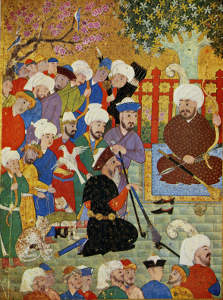 Frontispiece (recto side) |
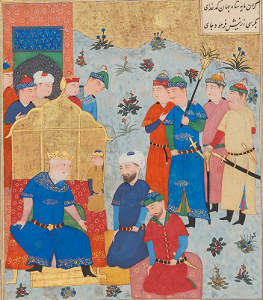 Salm and Tur send a second message to Faridun |
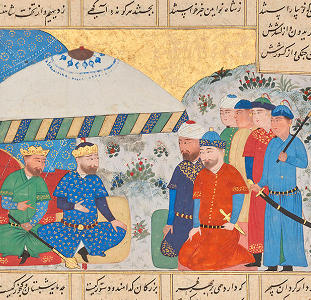 Faridun replies to the second message of Salm and Tur |
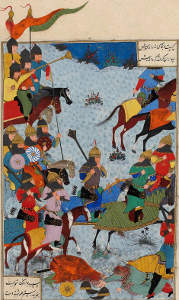 The combat between Rustam and Afrasiyab |
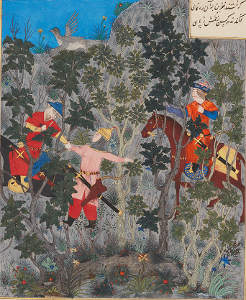 Zavara goes to the hunting lodge of Siyavush |
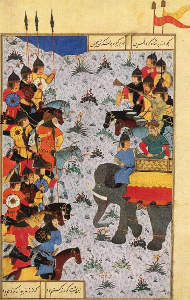 Kay Khusrau reviews his troops |
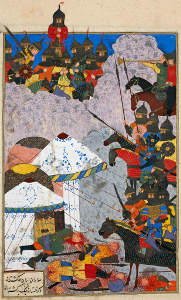 The Turanians attack the Iranians' stronghold on Mount Hamavan |
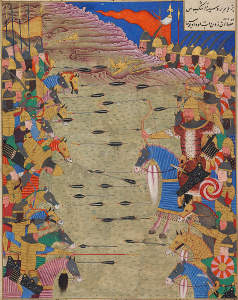 Rustam kills Ashkabus and his horse |
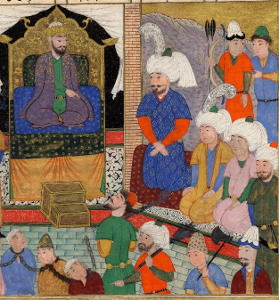 Fariburz comes to Kay Khusrau with Rustam's message |
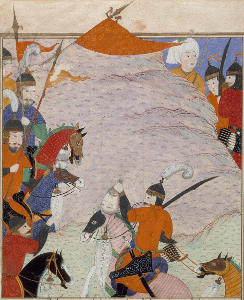 Bizhan brings Human's head back to the Iranian forces |
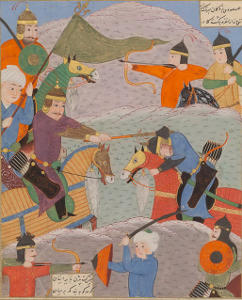 Nastihan makes a night attack and is killed by Bizhan |
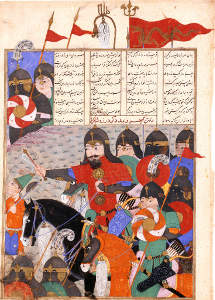 Khusrau draws up his army |
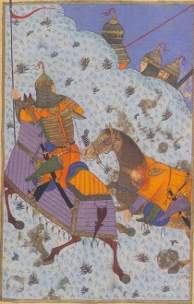 Guraza binds Siyamak onto his horse and leads him away |
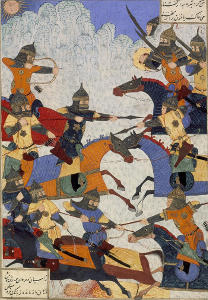 Giv fights Lahhak and Farshidvard |
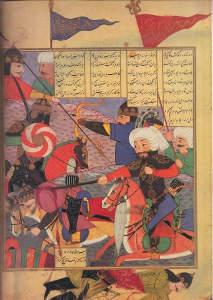 Kay Khusrau kills Aila |
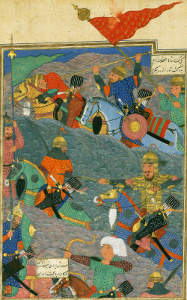 Kay Khusrau defeats and kills the King of Makran |
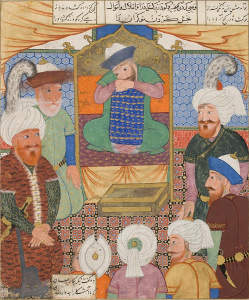 The testament of Kay Khusrau to Gudarz |
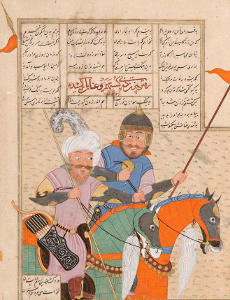 Bijan takes the reins to aid Gustaham |
